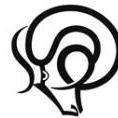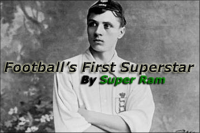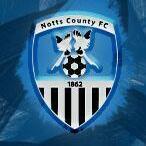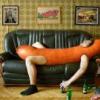
By super_ram

Here is part 6 in the series 150 years of football. As before there are links to the previous articles for anyone who may have missed them or may wish to read again. For my last birthday William1984 and Harrys_mummy bought me a book entitled Steve Bloomer - The Story of Football's First Superstar by Peter Seddon. Not many people outside Derby will have heard of Steve but members may have seen his name mentioned on the Jimmy and Jack Statue Fund forum page. I had already decided to make Steve the subject of an article so the forum posting gives me an excuse to indulge myself.
I hope readers enjoy this and find it interesting.
This is a fairly long article, so I have highlighted points of interest after the brief introduction, for those who just wish to pick out the main bits, and the statistics are at the bottom with a few extra bits of information.
Unfortunately there is no surviving film or video evidence of Steve Bloomer in action. All we can go by are what his peers said of him and what was written and of course his footballing statistics.
He was 5 foot 8 inch tall and weighed about 11 stone 3 pound with a very pale complexion, being almost sickly looking.
He had a devastatingly accurate cannonball shot with either foot, was very fast and could dribble but preferred quick interchange passing.He had very good ball control and was adept at volleying. He would often appear indifferent to what was happening in a match before suddenly pouncing on a loose ball or making a run into space to receive a pass. He was known as 'The destroying Angel' or 'The incomparable Steve. He was sent off once for retaliation.
He was also known to stand hands on hip and shake his head and give a withering look to any player who failed to take advantage of a pass from him or didn't pass when he was in a good position. This wasn't done with malice but from frustration at other players not being able to do what came naturally to him. He was his own biggest critic and got on very well mostly with other players. He became a national hero and was idolised in Derby.
Here is his story;
Stephen Bloomer was born on Tuesday 20th January 1874 in the village of Cradley, Worcestershire to parents Caleb and Merab(nee Dunn) Bloomer. This was 4 years before the foundation of The Football League, 10 years before the team he was to grace. Derby County was founded and only 10 years after the formation of The Football Association.
Steve's brother Philip, was born in 1875 and his sister Alice was born in 1878.
Steve's father was a 'puddler', an occupation in the production of iron (the name Bloomer also has connections with iron production).
In 1879 the family moved to New Normanton a suburb of Derby where the family shared a house (44 Yates Street) with another couple and their three teenage children. Steve's father used his 'puddling' skills to acquire a job at Ley's foundry which had been established in 1874 by Francis Ley.
Another sister Emma was born in1882 and another brother David in 1884 which necessitated a move across the road to 87 Yates Street.
Steve left school at the age of 12
Another sister Florence May was born on the 29th of May 1887, but just 6 months later Steve's mother died of pleurisy aged only 35.
This was a very difficult time for the Bloomer's but Steve found an outlet in football.
Around this time a lot of Church, pub and works sporting teams were being established and soccer leagues were being formed as football's popularity grew.
Steve spent 2 seasons playing for the 'Saints' who were attached to St Chad's church and aged 13 helped them to the final of the under 15 section of the Derbyshire boys shield.
The match was played at Derby's racecourse ground on the 11th of April 1887 as part of a football festival in front of 2000 paying spectators. His side lost 14-0 to St Luke's Choir but Steve was beginning to be noticed. Later that day Derby County played Dumbarton Athletic, the crowd having grown to 3000.
In 1888 Steve began working with his father and uncle at Ley's foundry as a striker how apt.
This was a fortuitous move as Francis Ley was a keen sports enthusiast who after visiting the U.S.A. in 1889 and seeing how a lot of American companies provided sporting facilities for their workforce's recreation and health decided to copy their idea.
He had sports fields laid out for the use by his own workers, with facilities for cricket and baseball. This became known as Ley's Baseball Ground.
Ley also founded Derby County Baseball Club as he attempted to encourage baseball and Steve became a team member.
The National Baseball League of Great Britain and Ireland was formed in1890 and Derby ran away with the 1st championship. Unfortunately other league clubs objected to the number of professional American players Derby had(3) and although winning 2 further titles Derby resigned from the league eventually disbanding 1898.
Derby County having played at Leys' ground when the Racecourse was unavailable, made it their permanent home from 1885, renaming it The Baseball Ground and played there until 1997 when they moved to Pride Park.
Derby County were by no means the only club establishing themselves in Derby. Another club called Derby Junction who began as Junction Street Sunday School caused a major upset on the 28th of January 1888 by beating Blackburn Rovers, who had already won the FA cup 3 times(1884,5 and 6) 2-1 in a FA cup quarter final. Junction lost the semi final to West Bromwich Albion. The game was played on Derby's arboretum, close to Steve's home, before 4000 spectators.
Another prominent team in the area was Derby Midland, formed from workers at The Derby Midland railway company but it was Derby County who were to become the most successful absorbing the best players from many local teams before being accepted as one of the 12 original members of The Football League.
Young Steve meanwhile at the age of 14, began playing for Derby Swifts, in the Derbyshire Minor League. He spent many hours alone practicing dribbling and shooting and In three seasons, he progressed to the under 17's, playing mostly as a centre forward or on the left wing winning his first medal along the way.
On the 7th of April 1890, with his younger brother Phillip, playing at right half Swifts won the under 15 Shield final. Steve qualified as he was under 15 when the competition began and scored the only goal against the team he had previously lost 14 -0 to 3 years earlier.
Steve was scoring goals regularly now and The Swifts were getting plenty of local press coverage.
In the following season Swifts lost in the senior final to Brampton works after a replay, though young brother Phillip got a win in the under 15's. There was consolation for Steve in the press reports which described him as the best young prospect they had ever seen.
Steve's reputation was such that Derby Midland invited him to try out in their reserve side while at the same time still playing for Swifts. He made his first team debut on the 27th of March 1891.
Derby Midland resigned from the Midland League and were absorbed by Derby County in June1891, who at the same time decided to run a reserve team. They also severed all connections with Derbyshire County Cricket team from where they had been formed. So now Steve Bloomer was a Derby County player, but not professional.
At the beginning of the1891/92 season Steve was offered a professional contract but decide to remain amateur as he wanted to help derby Swifts in that years Shield. He did however play at outside-right for the possibles against the probables, for the first time in a Derby County shirt on the evening of Wednesday 26 August,1891 at only 17 years old.
According to a report, he was pale, thin and ghost like almost ill looking, causing the crowd to laugh when he first turned out and he didn't get a chance to play for the first team again that season and only a few games for the second eleven playing most of his games for the newly formed third team.
Steve was still working with his father and brother at Ley's foundry in early 1892, but after scoring all four goals in a game for the third team against Darley Victoria, a momentous few weeks were about to unfold. On the 18th of April Steve captained the Swifts in the Shield final. They beat the same team that they had lost to the previous season, Bampton 6-0. Younger Brother Phillip also triumphing with the under 15's in the junior shield.
A few days later on the 23rd of April, Steve scored two for the reserves in a 9-0 win over the Sheffield club.
On the 30th of April, due to a fixture pile up, Derby reserves had two games to play on the same day. Both games were at home, one against Notts County Reserves, the other against Grantham and they needed to win both to secure the championship. The only way around this dilemma was to play two separate reserve sides. Steve, had already promised to turn out for Tutbury Hawthorn in a replayed Burton and District Challenge cup final against Gresley Rovers.
As Derby's 3rd team only played 15 games this season Steve, as an amateur free agent, had to search around at times to get games and hadn't anticipated being required by Derby's second team.
Derby county, fearing that Steve may be 'poached', quickly moved and had Steve signed and registered as a Derby County professional on the 26th of April 1892. Steve was 18 years and 97 days old.
Steve still played for Tutbury, scoring 2 goals in a 7-2 win and Derby won both their matches. The Football Association were called upon to arbitrate if Steve was elegible to play, the outcome being that both Tutbury and Gresley were awarded winners medals but Tutbury were stripped of the winners honour.
Steve was again to be involved in further controversy when Burton Wanderers tried to sign him. Steve refused but due to the persistency of the club's secretary, a Mr. Clarke, Steve did sign but the subsequent FA inquiry ruled that the Burton representative had acted improperly, so Steve remained a Derby County Player.
The 1892/3 season was only the Football leagues fifth season and Derby county had to apply (successfully) after finishing 10th out of 12 the first season, followed by finishes of 7th, 11th and again 10th out of, by now, 14 teams.This was also the season when the Football League expanded with a second division and the first division increased to 16 clubs.
Now fate took a hand with Steve. Due to Derby's new secretary failing to register three players with the League in time Steve got his chance with the first team. So on 3rd of September 1892 Steve Bloomer, in his first match as Derby County first teamer, scored two goals at the Victoria Ground against Stoke in a surprise 3- 1 victory.
After helping the reserves to a 4 - 2 win, and scoring,against Heanor town in the following mid week delayed final of the Derbyshire Charity Cup, Steve was selected to make his home debut against the then mighty Preston North End.
Steve's pay was just 7 shillings and 6 pence per week(about £50-£60) but it was round about this time that he gave up his job at Ley's.
In his first season as a Derby County player Steve played in every forward position scoring 11 league goals in 28 games, John Goodall being top scorer with 13.
John Goodall was born in 1863 in London though raised in Scotland and was a great influence on the young Steve Bloomer. He began his football career with Kilmarnock Athletic, moved to English club Great Lever making his debut against Derby County before joining Preston North End(The Invincibles) in 1895 and winning the 'double' with them in 1888/9. In Preston's record 26-0 record cup win he is credited with scoring 16 of the goals. He also played 16 times for England, was a champion at bowls and curling and played cricket for Derbyshire and Hertfordshire. Derby County signed him in May 1889, a real coup for the club, and he left in 1899.
John Goodall's brother Archie Goodall was born in Ireland and brought up with his older brother in Scotland. He also played a few times alongside John for Preston North End before transferring to Aston Villa for £100. In 1889 he was reunited with his brother at Derby County playing mainly at Centre half, making 380 appearances and scoring 48 goals. He represented Ireland playing at centre half or centre forward, becoming the oldest International goalscorer of the 19th century, the oldest ever goal scorer for Ireland and after joining Wolverhampton wanderers he became their oldest ever goalscorer. He also made a club record of 151 consecutive appearances while at Derby County.
John and Archie Goodall were the first brothers to represent different countries at international level.
The Goodall brothers, with Steve Bloomer, formed the backbone of the Derby County side that was challenging for trophies in the 1890's.
Steve suffered his first serious injury, a broken left collar bone playing against Leicester Fosse in a cup game on the 10th of February 1894 but was soon back in action. This season Steve finished as Derby's top scorer with 19 goals in 25 games helping the Rams to their highest finish to date of 3rd.
In 1894/95 Derby County struggled and though Steve only scored 10 goals in 29 league games he once again was the cubs top scorer.
Steve's personal form was however, good enough for him to be selected to play for England. On 9th of March 1895 he made his international debut at the county Ground, Derby against an admittedly weak Ireland with John Goodall also playing.
England won 9-0, with Steve and Goodall getting 2 goals each in front of 10,000 spectators. This was also the first time Steve's father Caleb, had watched Steve play. Caleb up till now had been against Steve playing football for fear of serious injury but became instantly smitten with the game, becoming an ardent follower of Derby County.
At the end of this season Derby were 15th out of 16 in the league and had to take part in play offs, known as test matches(automatic promotion and relegation was introduced later) to decide their league status for the following year.
Derby's first opponents were Notts County, who had finished 2nd in league Two. The match was played at Leicester's ground on the 27th of April 1895. With 7 minutes to go Notts were leading 1-0 but Steve and Johnny McMillan both scored thus preserving Derby's top tier status.
Derby County made the Baseball Ground their home in 1895. On the 14th of September they played Sunderland, who had been champions three times in the previous 4 seasons, winning 2-0, before a crowd of 10,000, Steve scoring both goals.
Steve also scored a hat trick, home and away, against Nottingham Forest this season.
Derby finished the season 4 points behind champions Aston Villa and Steve was injured for 5 of the last 6 matches, but he was still Derby's top scorer with 23 goals in 22 matches.
In September 1898 Derby, and Steve in particular, came in for some criticism due to lack of form. He and another inside forward, Jimmy Stevenson were made to play for the reserves in a friendly and steve scored twice in a 4-1 win over chesterfield town. The following day Steve and Nicholson turned up for training but were reported for their attitude and insubordination resulting in the derby committee suspending them both. The two players responded quite differently. Nicholson returned to Scotland, never to play for Derby again. Steve though had 'clear the air talks' with the committee and apologised. His suspension was also lifted and the little episode soon forgotten but not before several clubs came sniffing with transfer talk. All approaches were rebuffed and Steve ended the season again as Derby's top scorer with 30 goals from a total of 33 games.The 24 he scored in the league made him top scorer in the country. In one game, a 9-0 humiliation of Sheffield Wednesday, he scored 6 times, which is still the individual scoring record at Derby. Some response!
Over this few seasons Derby were one of the very top clubs but always the 'nearly ' team. Over 11 seasons Derby played in 7 FA Cup semi-finals and 3 finals, losing all of them.
During this time Steve was Derby's top scorer for 15 consecutive seasons and also top scorer in the Football league 5 times.
Steve's brother Phillip was also signed by Derby County and made his first team debut an 28th of September 1895, against Sheffield Wednesday. This was to be his only first team game as he died of peritonitis on 5th of may 1896.
On 19th August,1896 Steve married Sarah Walker at St.Thomas's Church. Their first child Hetty Winifred was born 15th February,1898 followed by Violet Pretoria 30th April 1898. A third daughter Doris Alexandra arrived 27th May 1902.
Steve's Father-in-law Bert Walker, ran a boot making business and became Derby's first paid bootman in the 1890's.
Steve's pay gradually increased and he became Derby's highest earner by the turn of the century on between £150 to £260 per year(about £30,000 today). This isn't much when compared with today's high earners but was more than twice what a miner was paid at the time. Being one of the most famous sportsmen of the time Steve was also able to boost his income by endorsing many products.
In February 1906 the unthinkable happened for derby County fans, Steve along with Jack Ratcliffe, a reserve left back, was transferred to Middlesbrough for a total fee of £750. Steve was at this time 32 and England's record goal scorer and the most famous player. The previous season ambitious but struggling Middlesbrough had signed Alf Common from Sunderland with the first £1000 transfer. The FA did not approve of this his amount of money being spent on transfers and set a limit of £350, implied but not implemented until 1908, hence Ratcliffe was a makeweight to come within FA rules.
On his Middlesbrough debut at Liverpool on the 17th of March1906, Steve suffered a 6-1 defeat as Boro continued to struggle. Steve's first goal came in his third match in a 1-1 draw at notts county and scored 5 more in the remaining 6 games while Alf Common scored 8.
Middlesbrough avoided relegation, securing the one point required to stay up, in game against Blackburn Rovers, Steve scoring the goal, and so did Derby who had also struggled. Forest were relegated with Wolves.
The following seasonwithout Steve, Derby were relegated.
In the1906/7 season Steve scored 20 goals in 36 league and cup games(Alf Common scored13 in 31) to become Boro's top scorer, including 4 against Woolwich Arsenal in what was his 7th game in a 15 day period over Christmas. Steve played in both the league fixtures against Derby in their relegation season, scoring in boro's 4-1 home win.
Steve played his last England game this season against Scotland at Newcastle, scoring in a 1-1 draw.
Between this match and his England debut in1895, Steve played a further 21 international games.
Why did the 'incomparable Steve' only play 23 times for England. Simple, in those far off days there was little international opposition. The only official internationals that were played were mostly the 3 home internationals played at the end of the season between England, Ireland, Scotland and Wales. Scotland were the strongest of opposition teams and Steve was known as 'the hammer of the Scots' for his goalscoring exploits against them.
In 1902 Steve captained England against Scotland in Glasgow in what became known as the Ibrox disaster. While the game was in progress a section of a stand collapsed killing 26 people and injuring hundreds more. The game was stopped and the players left the field but officials decided to continue playing as few of the remaining spectators realised the enormity of situation and feared panic if the game was abandoned. Steve had to lead the England players back onto the field past dead and injured fans before the game continued this game doesn't count in records.
Steve also represented the English league 15 times.
The 1907/8 season saw Steve joint top scorer with 12 goals from 35 games as Boro finished in their highest ever position of 6th.
In 1908/9 Steve scored 14 goals in 28 games but missed 9 games due to illness.
1909/10 Steve was second highest scorer with 1 goals, as Middlesbrough struggled again. he played his last game for Boro on the 25th of March 1910 losing to Aston villa 4-2.
The 1911/12 season began but Steve had not re-signed for Boro and his future was uncertain.
On the 24th of September 1910 Steve was brought back to Derby County for a fee of £100. Steve was now 36 years old and Derby were in the second division having finished 6th, 5th and 4th in the previous seasons. Derby were also struggling financially and gates had dropped to below 7000.
On October 1st Steve made his second debut for Derby as captain against Lincoln City, to a hero's welcome with a crowd of over 12000 watching. He scored after 20 minutes and again with a penalty, the rams ending 5-0 winners. This season derby progressed to the quarter final of the FA cup and were front runners in the league. Gates had risen to the 20,000 mark but they ended in 6th place, with steve top scorer again with 24 goals from 32 league and cup games.
After strengthening the defence for the 1911/12 season, Derby secured promotion with a 2-1 win over cup finalists Barnsley and once again steve was the clubs top scorer with18 goals.
The following season,1912/13 Steve scored a hat trick in consecutive home games and 2 just before his 39th birthday ending with a total of 14 goals from 30 appearances and derby finishing 7th in the league.
The 1913/14 season was Steve's last as a first class player. He only played for the first team 6 times, his final league appearance being against Bradford City on the 24th of January 1914, a 0-0 draw. One week later he played his last first team game in a fourth round FA cup tie away at Burnley losing 3-2.
After retiring from playing Steve took up an offer to coach Berlin Britannia Football Club, a British founded club, in Germany arriving there on 14th July 1914. This was not one of Steve's best moves as Britain declared war on Germany 3 weeks later as the first world war escalated. He spent the next 4 years interned in a civilian prison camp called Ruhleben which was a racecourse. Around 4000 men were imprisoned here in very grim conditions but most found an outlet in sport, football and cricket in particular. Whilst interned Steve received the sad news that his second daughter Violet, had died from kidney disease.
In March 1918 Steve being 44 now was released to Holland though his movements were restricted and he did get a coaching position with Blauw Wit, an Amsterdam club. Steve was also in demand to appear in exhibition matches.
Steve eventually returned to Derby on the 22nd of November 1918.
When football returned to normal in the 1919/20 season Steve became player/coach for Derby County reserves, also writing a series for The Derbyshire Football express.
In November,1919, Steve declined an offer to become coach to the Polish Olympic football team.
In January 1920, Steve became a father again,but his daughter Patricia died soon after on the 3rd of February.
After Derby County's relegation in the1920/21 season Steve was installed as first team coach for the following season.
In May 1922 Steve took a summer job coaching in Montreal, Canada.
By the end of the 1923 season Derby County's debts were increasing and for cost cutting reasons, Steve's contract was not renewed.
In October 1923 Steve took the job of coach to Real Union in Spain, helping them win The Copa Del Rey (in effect their championship at the time) on the the 24th of May 1924, beating Real Madrid 1-0.
When his 2 year contract ended Steve returned to Derby in August 1925.
For the next few years Steve continued with his jounalistic duties and was also a 'general assistant' at Derby county, which involved a variety of jobs from 'scouting' to sweeping the stands.
Steve's wife, Sarah died suddenly after a short illness, aged 61 on the 9th of April 1936 and Steve went to live with his Daughter Dorisand her husband Cyril.
Around 1937 Steve's health was beginning to fail, as he began to suffer with bronchitis and asthma. A group of Derby County connected business men donated and raised money to enable Steve to go on a recuperative cruise to Australia and New Zealand.
Steve returned to Derby in March 1938 feeling much better and looking forward to watching the rams again. The day after his return home Steve was again taken ill and three weeks later on the 16th of April 1938, Steve passed away, aged 64.
Later that same afternoon Derby County, wearing black armbands beat Liverpool 4-1 and a minutes silence was observed at many sporting occassions over the next few days. His funeral was held on the 20th of April 1938 at a packed Derby Cathedral. 100 wreaths were sent including from the FA and a lot of rival clubs.
He was laid to rest with his wife and 2 daughters in Derby's Nottingham Road cemetery
Steve played;
474 league games for Derby County scoring 293 goals.
125 league games for Middlesborough scoring 59 goals.
A total of 600 League games(including 1 Test) scoring 352 goals.
He played 50 FA Cup games for Derby County scoring 38 goals
5 FA Cup games for Middlesborough scoring 3 goals.
In total he played 655 games scoring 394 goals.
For England he played 23 times scoring 28 goals.
Steve scored in each of the first 10 games he played for England(19 in total for that period)
He is the only player to score 6 goals in a first class game for Derby County
He scored a club record 18 hat-tricks for Derby County and is the oldest player at 38 years and 261 days to score a hat-trick for Derby.
He was the leading scorer in The Football League 5 times, Derby County's top scorer for 15 consecutive seasons and twice top scorer for Middlesborough..
Derby County's official club anthem, 'Steve Bloomer's watchin' is played before every Rams home game.
There is a memorial to Steve in the centre of Derby, one in Cradley and also a bronze bust statue of Steve at the side of the home dug out at Pride Park created by Andrew Edwards.
Derby County(my team,if you hadn't guessed) have donated a replica Steve Bloomer bust to help raise funds for The Derbyshire, Rutland and Leicester Air Ambulance and The Jimmy And Jack Statue Fund.
I hope I've not bored you all with article, thanks for reading if you've got this far.
Discuss the Series - Super Rams Articles in the Community.
Previous Article | How It Came Together











Recommended Comments
Create an account or sign in to comment
You need to be a member in order to leave a comment
Create an account
Sign up for a new account in our community. It's easy!
Register a new accountSign in
Already have an account? Sign in here.
Sign In Now